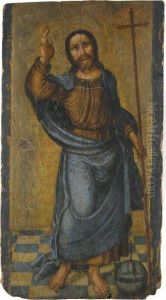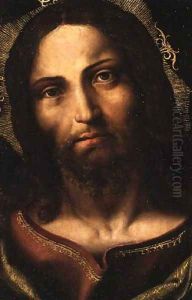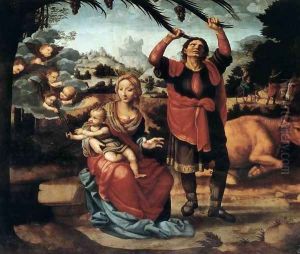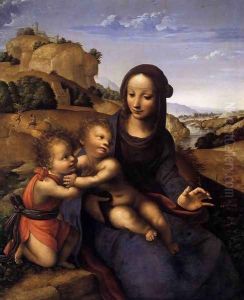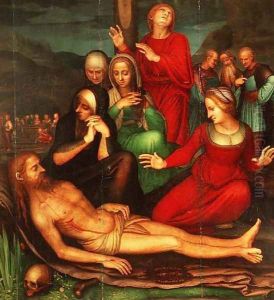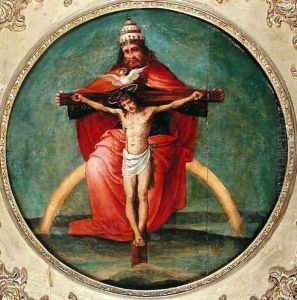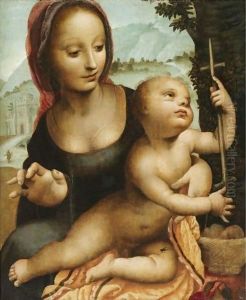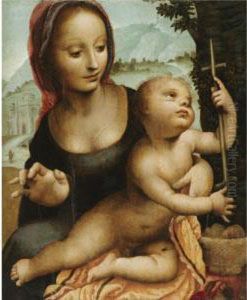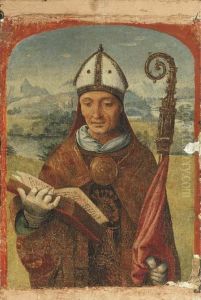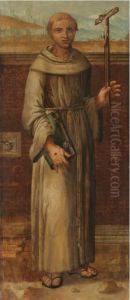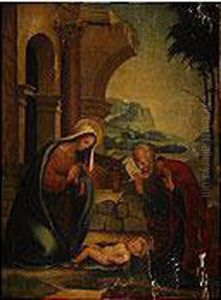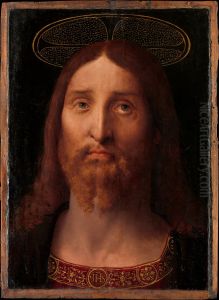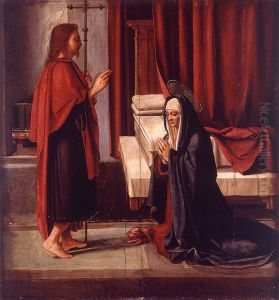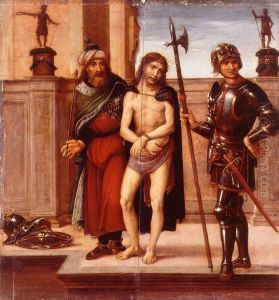Fernando Yanez De la Almedina Paintings
Fernando Yáñez de la Almedina is recognized as a significant figure in the history of Spanish Renaissance art. Although details about his early life are scarce, he is believed to have been born around 1475 in Almedina, in the province of Ciudad Real, Spain. Yáñez's artistic career took a pivotal turn when he traveled to Italy, as did many artists of his time, to study the works of the Italian masters. This journey had a profound impact on his style, particularly the influence of Leonardo da Vinci, whose work he encountered in Florence.
Yáñez returned to Spain with a renewed artistic vision, and his style became a hybrid of Spanish and Italian influences. He is particularly noted for bringing elements of the Italian Renaissance into Spanish art, such as the use of sfumato and chiaroscuro, which were hallmark techniques of Leonardo. His works often featured religious themes, which was typical for the period, and he demonstrated a skillful use of perspective and a rich palette that reflected his Italian experiences.
One of his most famous works is the altarpiece of the Cathedral of Valencia, which he worked on with another Spanish painter, Fernando Llanos. These works further testify to the diffusion of Italian Renaissance styles into Spain and Yáñez's role in this process.
Despite his contributions, Yáñez did not achieve the same level of fame as some of his contemporaries. However, his work has been appreciated more in recent years for its unique blend of Renaissance techniques and Spanish sensibility. The exact date of his death is not known, but it is believed that he was active until at least 1536. Today, his work is studied as a critical link between the Italian and Spanish Renaissances, bridging the gap between these two influential artistic movements.
